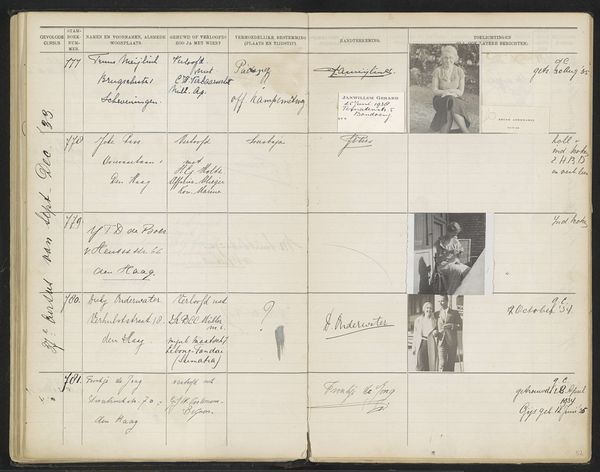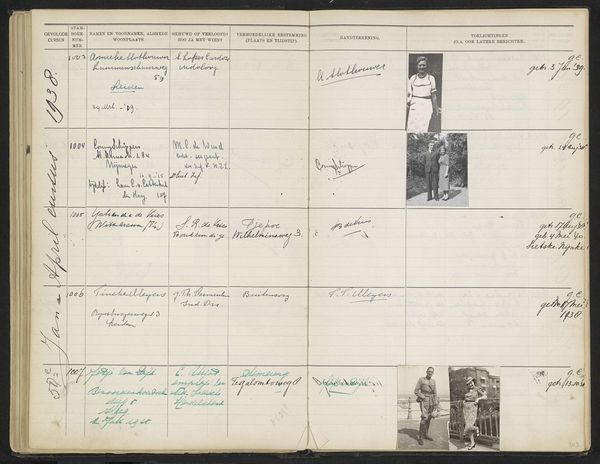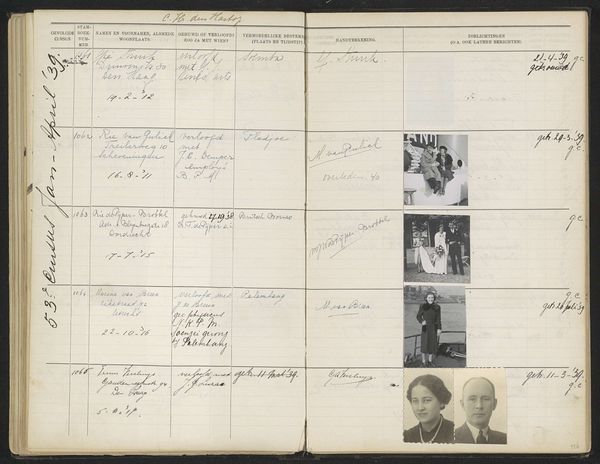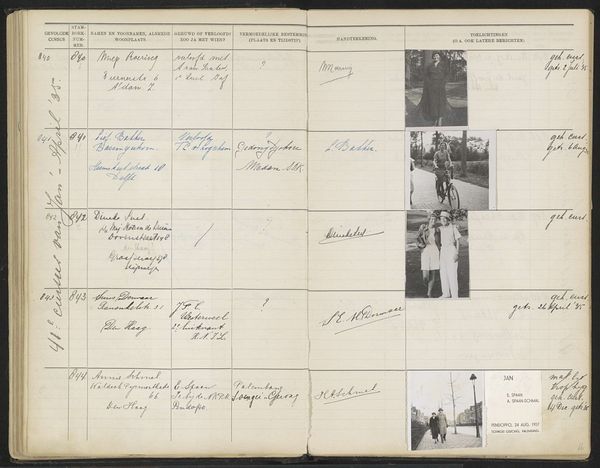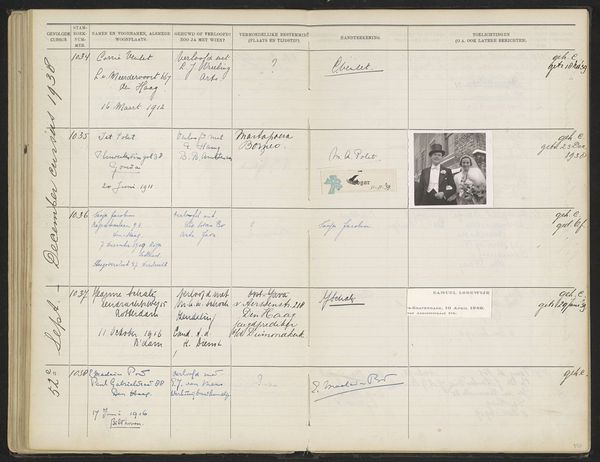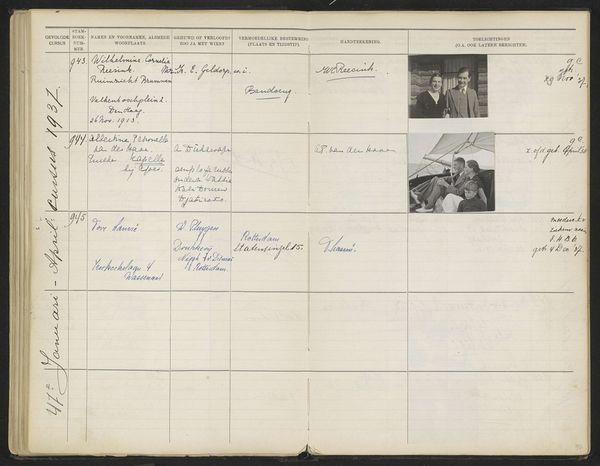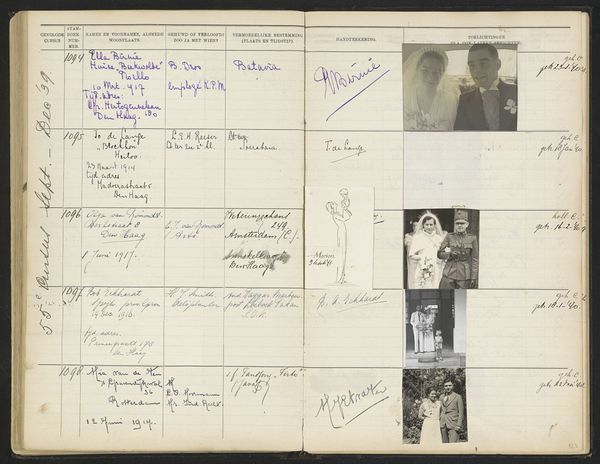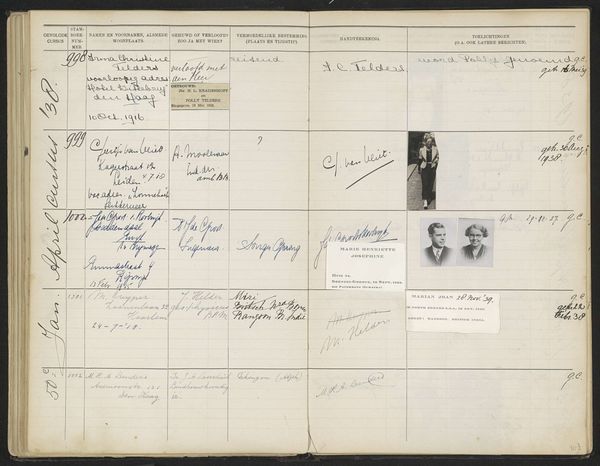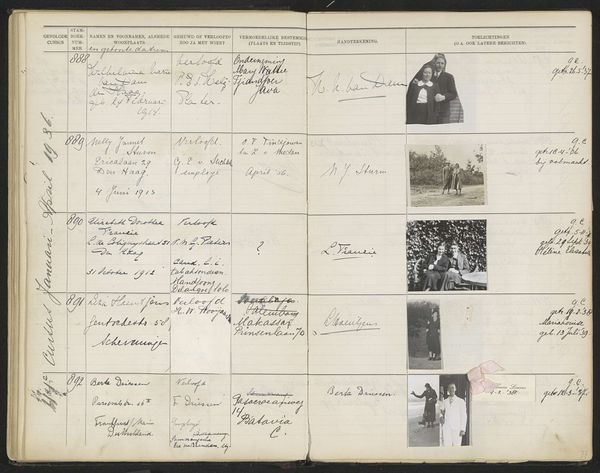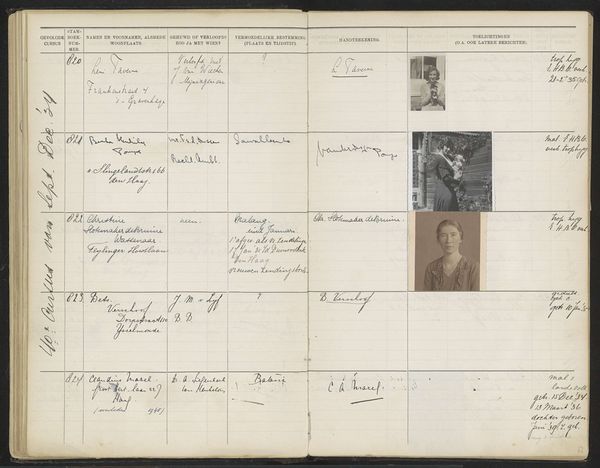
Blad 100 uit Stamboek van de leerlingen der Koloniale School voor Meisjes en Vrouwen te 's-Gravenhage deel II (1930-1949) Possibly 1937 - 1939
0:00
0:00
drawing, paper, photography
#
portrait
#
drawing
#
paper
#
photography
#
calligraphy
Dimensions: height 337 mm, width 435 mm
Copyright: Rijks Museum: Open Domain
Editor: This is "Blad 100 uit Stamboek van de leerlingen der Koloniale School voor Meisjes en Vrouwen te 's-Gravenhage deel II (1930-1949)," potentially created between 1937 and 1939 by an anonymous artist. It seems to combine drawing, calligraphy, and photography on paper. I find it so interesting that it records names and has portrait photographs included; it looks almost like a register of some kind. What strikes you about this piece? Curator: Well, consider the physical production of such a book. The paper itself – what kind of material is it, and how was it sourced? The ink used for the calligraphy – what pigments were employed, and were they locally sourced or imported? Even the photographic process is vital here. Was the book mass-produced? These material factors are incredibly significant. It appears that different hands created the photographs, calligraphy, and binding, raising intriguing questions. How might we trace the labor involved in producing it? Editor: That's a very different way to think about art! I’m used to focusing on the subject, rather than the physical aspects of its making. How does understanding the labor and the materials change our perspective on a piece like this? Curator: By acknowledging that no piece of art is born from nothing! We can't isolate "art" from the systems, markets, and labour required for its production. We also see that photography as a democratizing material process provides these sitters from this colonial school agency to record their likeness on the very same level as any sitter with the means to be painted, sculptured or sketched. It allows the image to live on! So consider its origins as something inherently tied to societal power structures, while offering power to those students previously with none! Editor: I see! It encourages me to appreciate the work and social context and what went into it much more! Curator: Exactly! It encourages us to look past the image, and understand its materiality and production as something inextricably bound with both meaning and colonial society.
Comments
No comments
Be the first to comment and join the conversation on the ultimate creative platform.
